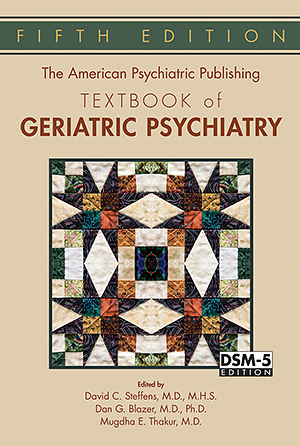Sections
Excerpt
In this chapter we review the presentation, epidemiology, correlates, and treatment of late-life anxiety, obsessive-compulsive, and trauma-related disorders. Since publication of the last edition of this textbook in 2009, there have been many advances in neuroscience as well as the introduction of DSM-5 (American Psychiatric Association 2013) and of the Research Domain Criteria of the National Institute of Mental Health (NIMH; Cuthbert 2014). There have also been advances in the understanding of late-life anxiety disorders and related conditions. It is still the case that much more is known about the pathophysiology and treatment of geriatric depression than about geriatric anxiety disorders, mainly because of the dearth of longitudinal and/or mechanistic studies that would shed light on aging-related pathophysiology of the latter. On the other hand, with respect to treatment, several recent clinical trials now support the use of treatments such as selective serotonin reuptake inhibitors (SSRIs) and cognitive-behavioral therapy (CBT) for these common distressing and impairing disorders. Accordingly, this chapter summarizes recent advances in knowledge about the epidemiology and treatment of anxiety disorders in older adults and synthesizes them into a body of information to guide clinicians and researchers.
Access content
To read the fulltext, please use one of the options below to sign in or purchase access.- Personal login
- Institutional Login
- Sign in via OpenAthens
- Register for access
-
Please login/register if you wish to pair your device and check access availability.
Not a subscriber?
PsychiatryOnline subscription options offer access to the DSM-5 library, books, journals, CME, and patient resources. This all-in-one virtual library provides psychiatrists and mental health professionals with key resources for diagnosis, treatment, research, and professional development.
Need more help? PsychiatryOnline Customer Service may be reached by emailing [email protected] or by calling 800-368-5777 (in the U.S.) or 703-907-7322 (outside the U.S.).



